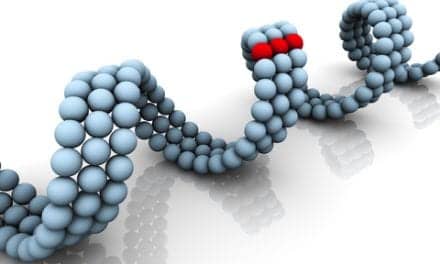The Boomer Esiason Foundation continues to raise money and awareness in seeking a cure for this life-threatening disease.
For many retired professional athletes, postgame life consists of golf, commercial endorsements, and perhaps a secondary career as a sports commentator. For former Cincinnati Bengals quarterback Boomer Esiason, retiring from football has meant all this and more. Besides his position as an ABC Sports commentator for “Monday Night Football,” his main purpose now is not scoring touchdowns but devoting more energy to his nonprofit foundation dedicated to raising money for cystic fibrosis (CF) research. He has even enlisted help from other professional athletes and former teammates to work together for this cause.
Esiason established the Boomer Esiason Foundation in 1993 after his son Gunnar, now 8 years old, was diagnosed with cystic fibrosis. The football star created the New York City-based foundation to find a cure for the disease.
“When children such as Gunnar have been chosen to go into battle at such an early age, it is not because they are being punished or cursed by God,” says Cheryl Esiason, Boomer’s wife. “It is because they are a gift, an inspiration. They are here to challenge us to open our eyes to life’s frailties, its contingencies, and just how precious it is. They are here to teach us–they are our heroes.”
Establishing the Foundation
The foundation was created to be a valuable resource for cystic fibrosis patients. According to the organization’s mission statement, “The foundation is a partnership of leaders in the medical and business communities joining with a committed core of volunteers to provide financial support to research aimed at finding a cure for cystic fibrosis. The foundation works to heighten awareness of cystic fibrosis and to provide a better quality of life for those affected by cystic fibrosis.”
The foundation’s main goals are to ensure that:
o researchers searching for a cure for cystic fibrosis have the resources they need;
o health care workers have access to providing effective and innovative treatments for CF;
o people are educated in the ongoing battle against cystic fibrosis;
o patients with CF are empowered to take active roles in combating the deadly disease; and
o students and hospital staff are provided with the financial resources and educational tools they need.
The foundation’s staff is small, with just three full-time staffers, including former NFL center Dave Rimington. Now president of the foundation, Rimington met Esiason in 1983 when they played football together for the Bengals.
“I was his center and we became real good friends,” Rimington recalls. “I was in his wedding and close to his family. When his son was diagnosed, we just got together to try to brainstorm ways to fight this disease. We came up with the idea of starting a foundation.”
The plan did not take off right away, however. Rimington retired from the NFL, went to graduate school, and then moved to Hong Kong. One day, Esiason called and said he was serious about starting the foundation, Rimington remembers. “So I moved back and we started this thing up about 5 or 6 years ago and we’ve been going strong at it ever since,” he says.
The idea of making a career change from professional sports to nonprofit work does seem unlikely, Rimington admits. “It’s unusual, to say the least,” he says. “But it’s been very fulfilling. I think if I worked in the corporate world, I don’t think there would be a job out there that you’d be excited to go to like I am with this.
“I never in a thousand years thought I’d do nonprofit work,” Rimington laughs. “It is strange. It was like taking a crash course–learning as much as you possibly can–to try to raise money. I just felt that this was something I could do and feel good about doing. And it’s turned out that way.”
Raising Money for CF Research
The foundation holds a number of annual fund-raising events and marketing campaigns. It also relies on individual pledges, corporate contributions, and philanthropic grants. Since 1993, the Boomer Esiason Foundation has raised more than $4 million for cystic fibrosis research. The foundation has more than 65 corporate sponsors.
Esiason’s role focuses mostly on planning fund-raising events. “He knows what a good event looks like,” Rimington explains. “He’s been to enough of them. We try to make our events a little more special than most. We just try to add a little extra touch. And [Esiason] is really good at doing that–he’s good at adding the finishing touches to a lot of these events.”
For example, Rimington cites the foundation’s plans to organize a high school all-star football game. The event won an Emmy Award last year for high school sports production. And this year, the foundation wants the event to be even better. “Boomer has some of the Monday Night graphics and things that will add that little extra touch to it,” Rimington says.
The most successful fund-raising event the foundation has organized has been the annual “Booming Celebration.” In March, the foundation’s Sixth Annual Booming Celebration raised more than $1.5 million for cystic fibrosis research.
The Booming Celebration has become one of the foundation’s most popular events since its inception in 1994. It honors all of the foundation supporters, reserving special recognition for the foundation’s “Most Valuable Player.” The evening includes a cocktail reception, full-course dinner, live entertainment, and a silent auction of sports memorabilia.
This year’s event enlisted support from business leaders and sports celebrities. The celebration named Harvey Sanders, chairman of Nautica Enterprises Inc, the foundation’s 1999 Most Valuable Player. The Most Valuable Player Award, a bronze statue of Boomer and Gunnar, was established in 1994 to recognize outstanding individual contributions to the Boomer Esiason Foundation.
The celebration also featured a live auction, with Fox Sports football commentator Chris Collinsworth and Michael Strahan of the New York Giants serving as auctioneers. Auction items included a children’s “slumber party” with Strahan at the FAO Schwarz toy store and an all-inclusive golf trip for six with Esiason and Collinsworth.
Besides planning events, Esiason is also active in cause marketing. “He will give his name and likeness to a company in exchange for a percentage of the sales going to the foundation. So that’s a way we can really exploit his celebrity status,” Rimington says. “He doesn’t make any apologies. He will put his name on just about anything to raise money for CF.” Some of the products Esiason endorses include a barbecue sauce and salsa.
Working with the CF foundation
Although the foundation raises money for CF research, it does not pretend to know how it should be spent. “You’ve got an ex-football player here trying to think of where the money should go?” Rimington laughs. “We let the people with the expertise handle that. We just try to raise money–as much as possible.”
The foundation mainly directs funds to the Cystic Fibrosis Foundation (CFF). “We support them and think they’re going to be the best chance for a cure,” Rimington says.
Cheryl and Boomer Esiason have agreed to serve as cochairs of the CFF’s “Building Bridges to a Cure,” a major campaign designed to expedite the process that brings new CF drugs to market. The goal of the campaign is to raise $20 million by the year 2000. The money will be used to bridge the gap between basic research discoveries–made at CFF’s nationwide network of research centers (the Therapeutics Development Center Network)–and new drugs to treat and cure CF.
“Right now, there’s not enough incentive or enough money out there to bring a new drug to market,” Cheryl Esiason told the Boomer Esiason Foundation’s board of directors at its October meeting. She said it can take roughly 14 years and $250 million to make new drugs available to CF patients.
The “Bridges” program has two parts. First, resources will be provided to drug developers as they create new drugs to battle CF. These drugs will help in gene therapy, in repairing the defective CF gene’s protein product, or in addressing the connection between the defective gene and fatal lung infections.
Second, the program will create an infrastructure to facilitate the drug development process. CFF’s current clinical research network offers a standardized environment for the drug development phase that involves testing on patients with CF. This model network is intended to help streamline the process leading to Food and Drug Administration approval of new CF drugs.
“The development of new drugs and getting those drugs to market . . . that’s our future,” Cheryl Esiason said. “We have made a personal commitment to this very important project and will be working hard to ensure the Cystic Fibrosis Foundation meets its goal.”
Providing an Online Resource
Along with the fund-raising efforts, the foundation maintains an updated Web site to serve as a resource for those affected by cystic fibrosis. Rimington has helped to build the site for the past 4 years. Every day, he looks for information to post on the site and works with a Web designer to plan the layout.
The Web site provides information about the foundation and its mission, but also includes a section with news and resources on cystic fibrosis. One of the site’s features is a “Spotlight” area that regularly profiles individuals with the disease. “We try to make it motivational,” Rimington explains. “It lets people with CF know that they’re not alone. There’s a lot of people with the same problems.”
Another section features a “Boomer Close-Up” on Esiason’s job as a television commentator. This section includes an interview with Esiason where he explains his purpose in life.
“Maybe that’s why I have such a laissez-faire attitude to the backstabbing and the other stuff in the TV business,” Esiason says in the interview. “I can make a difference in this world by helping to find a cure for cystic fibrosis. That’s my ultimate thing.”
Conclusion
“Boomer really puts a name and face on this disease,” Rimington says. “He’s been willing to exploit what he’s been able to achieve in football and behind the microphone and raise significant dollars.”
“Five years ago, I didn’t know how serious it would be with this,” Rimington adds. “I didn’t know he would be this serious. I remember when he talked about being able to raise a million dollars and I thought, ‘How are we going to be able to do that with just a couple of people?’ But we’ve been able to do that and more.”
For an ex-pro athlete, the work on the football field has no comparison to the work for the foundation. “When I played football, it was more of a selfish thing,” Rimington says. “It was something I was pretty good at, and I thought it was my way to achieve a little notoriety and a little money.”
On the field, he says, he knew exactly where he stood and what needed to be done. In contrast, the foundation’s work does not provide the same personal financial rewards or the same short time frame for success. Most important, the impact of the foundation’s work is not just a game, but a matter of life or death.
Although Esiason and Rimington are committed to the efforts of the foundation, they do not have long-range plans to keep the organization running. Both hope that the foundation will not be necessary in the future, and that a cure for cystic fibrosis is imminent. “Hopefully, one day we won’t have to do this anymore,” Rimington says.
For more information on the Boomer Esiason Foundation, call (800) 789-4376 or email [email protected].
Lisa Chiu is a contributing writer for RT.









